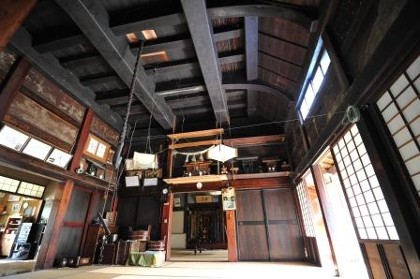
I even feel fear the great vitality of Kominka that endures for one hundred years and more. Kominka still survives and the attraction has never faded away. I think that the attraction gains year by year.
On the other hands, it seems to me that the modern house’s vitality and the attraction are weak and fragile. Let’s think about the cause.
The house has suffered from various natural disasters such as storms, earthquakes, and landsides. The technique of building house advanced to endure for these disasters.
And the technique is handed down to posterity by craftsmans with precious experience of the calamities. However, modern construction methods neglect craftsmans technique so that the vitality of house reduces.
When we built a folk house, long time ago, the components must not be used from faraway community, much less components from other countries.
To take an instance, timber is desired to be used in the community it grows because it exerts the property and the durability.
I think that it is related the hauling distance of components and the vitality of Kominka.
Every site has each climate. It is different and original. For example, Tokyo and Matsumoto, there are enormous different climate such as precipitation and humidity.
Kominka, Japanese old folk house, is built to harmonize with nature by ingenuities of lives depend on each climate. Therefore, there are established many structure and construction methods all over Japan.
In short, these elements composed Japanese peculiar building culture.
I have doubts about Japanese trend houses are built by uniform components and featureless construction methods without considering the locality.

Koiminka in Niigata (One of heavy snowfall areas)
The construction method is not suitable for climate causes to deteriorate the durability and comfortableness.
As a result, I think improper building systems decline the vitality of houses are exposed to the weather.
Hironobu FURIHATA

 5F Design Center Building
5F Design Center Building